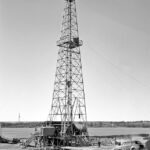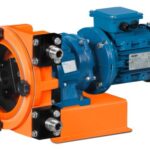Predictive maintenance is a methodology used in the oil and gas industry to ensure the smooth and continuous operation of equipment and machinery. It involves the use of advanced technology and analytics to predict when equipment is likely to fail and take corrective measures before the failure occurs. Predictive maintenance is a cost-effective approach that maximizes equipment uptime, reduces maintenance costs, and improves safety by minimizing the likelihood of equipment failure.
The oil and gas industry is a capital-intensive sector that depends heavily on equipment and machinery to extract, transport, and refine oil and gas. The industry operates in a harsh environment that exposes equipment to high temperatures, pressure, corrosion, and abrasion. The industry’s equipment is subjected to extreme conditions, and regular maintenance is necessary to prevent equipment failure, which can lead to costly downtime, safety incidents, and environmental damage.
Predictive maintenance (PdM) has become a critical tool in the oil and gas industry, enabling operators to increase equipment reliability and uptime while reducing costs associated with maintenance, repair, and replacement. By detecting issues before they occur, predictive maintenance helps to reduce unplanned downtime, increase safety, and lower operating costs.
The PdM approach involves monitoring equipment in real-time using sensors and other monitoring devices to collect data on equipment performance. The data is then analyzed using advanced analytics and machine learning algorithms to detect patterns and anomalies in the equipment’s behavior. The analysis generates actionable insights that help operators to identify and prioritize maintenance activities based on equipment health, criticality, and risk.
Implementation of Predictive maintenance in the Oil and Gas Industry
The implementation of PdM in the oil and gas industry requires a comprehensive approach that involves the following steps:
- Identify critical equipment: The first step in implementing PdM is to identify the critical equipment that requires monitoring. This includes equipment that is essential to the operation, equipment that is expensive to repair or replace, and equipment that poses a safety or environmental risk if it fails.
- Install sensors and monitoring devices: Once the critical equipment has been identified, the next step is to install sensors and monitoring devices to collect data on equipment performance. The sensors can be placed on the equipment, such as pumps, compressors, and turbines, to monitor critical parameters such as temperature, pressure, vibration, and flow rate.
- Analyze data: The data collected by the sensors is then analyzed using advanced analytics and machine learning algorithms. The analysis generates insights into the equipment’s health and performance, which helps to detect anomalies and predict when equipment is likely to fail.
- Take corrective action: The insights generated by the analysis are used to take corrective action, such as scheduling maintenance activities or replacing parts before they fail. This helps to minimize downtime and reduce the risk of equipment failure.
Benefits of Predictive Maintenance in the Oil and Gas Industry
- Reduced maintenance costs: PdM helps to reduce maintenance costs by enabling operators to schedule maintenance activities based on equipment health and performance. This reduces the need for reactive maintenance, which can be costly and time-consuming.
- Increased equipment uptime: Predictive Maintenance helps to increase equipment uptime by detecting issues before they occur and taking corrective action. This reduces the likelihood of unplanned downtime, which can impact production and revenue.
- Improved safety: PdM helps to improve safety by minimizing the likelihood of equipment failure. This reduces the risk of safety incidents and environmental damage.
- Improved asset management: PdM helps to improve asset management by providing insights into equipment health and performance. This helps operators to make informed decisions about maintenance, repair, and replacement.
Predictive Maintenance Tools
Predictive maintenance (PdM) relies on a variety of tools and technologies to detect potential equipment failures before they occur. Some of the common predictive maintenance tools include:
- Sensors: Sensors are used to collect data on equipment performance and health in real time. The data is then analyzed using machine learning algorithms to detect potential equipment failures.
- Vibration analysis: Vibration analysis is a technique that uses vibration sensors to detect abnormal vibrations in equipment. Changes in vibration patterns can indicate potential equipment failures.
- Infrared thermography: Infrared thermography is a non-destructive testing technique that uses thermal imaging cameras to detect changes in temperature that can indicate potential equipment failures.
- Oil analysis: Oil analysis involves monitoring the condition of oil in equipment to detect potential equipment failures. Changes in oil quality and composition can indicate potential equipment failures.
- Ultrasonic testing: Ultrasonic testing uses high-frequency sound waves to detect defects and anomalies in equipment. Changes in sound wave patterns can indicate potential equipment failures.
- Acoustic emission testing: Acoustic emission testing is a technique that uses sensors to detect high-frequency emissions generated by the equipment. Changes in emissions can indicate potential equipment failures.
- Machine learning algorithms: Machine learning algorithms are used to analyze data collected from sensors and other monitoring devices to detect patterns and anomalies that can indicate potential equipment failures.
- Artificial intelligence: Artificial intelligence is used to automate the analysis of data collected from equipment and to make predictions about potential equipment failures.
In summary, predictive maintenance relies on a variety of tools and technologies to detect potential equipment failures before they occur. These tools include sensors, vibration analysis, infrared thermography, oil analysis, ultrasonic testing, acoustic emission testing, machine learning algorithms, and artificial intelligence.
Case Study: Predictive Maintenance in the Oil and Gas Industry
Chevron, a leading oil and gas company, has implemented PdM across its operations to improve equipment reliability and reduce maintenance costs. Chevron’s PdM approach involves monitoring critical equipment, such as compressors, turbines, and pumps, using sensors and monitoring devices to collect data on equipment performance. The data is analyzed using machine learning algorithms to detect anomalies and predict when equipment is likely to fail.
Chevron’s PdM approach has helped to reduce maintenance costs by up to 25% and improve equipment reliability. For example, by monitoring the health of its gas turbines, Chevron was able to identify a compressor blade failure before it caused a major equipment failure. The early detection enabled Chevron to replace the blade during planned maintenance, avoiding unplanned downtime and reducing the risk of a safety incident.
Chevron’s PdM approach has also helped to reduce environmental impact by detecting leaks and other equipment issues that could result in emissions. The early detection enabled Chevron to take corrective action, reducing the likelihood of environmental damage and improving regulatory compliance.
Predictive Maintenance vs Preventive Maintenance: Differences
Predictive maintenance (PdM) and preventive maintenance (PM) are two distinct maintenance strategies used by industries to manage and maintain their equipment. While both approaches aim to reduce downtime and maintenance costs, they differ in their methodology and approach.
Predictive Maintenance:
Predictive maintenance is a data-driven maintenance strategy that uses real-time monitoring and analysis of equipment data to detect and predict potential equipment failures before they occur. PdM uses advanced technologies such as sensors, machine learning algorithms, and artificial intelligence to analyze data collected from equipment and identify patterns that can predict future equipment failures. Predictive maintenance enables maintenance teams to schedule maintenance and repairs before a failure occurs, reducing unplanned downtime and improving equipment reliability.
Preventive Maintenance:
Preventive maintenance is a maintenance strategy that involves regularly scheduled maintenance and inspection of equipment to detect and prevent potential equipment failures. PM is a calendar-based approach where maintenance is performed based on a predetermined schedule, regardless of whether the equipment needs maintenance or not. Preventive maintenance typically includes activities such as lubrication, cleaning, and replacing parts before they wear out.
Differences between Predictive and Preventive Maintenance:
Timing:
Predictive maintenance involves monitoring equipment in real-time to detect potential failures before they occur, while preventive maintenance is based on a predetermined maintenance schedule.
Maintenance approach:
PdM is a data-driven maintenance approach that uses advanced technologies to analyze equipment data and detect potential failures, while PM is a calendar-based approach that relies on regular maintenance and inspection.
Cost:
PdM is more cost-effective than PM because it enables maintenance teams to schedule maintenance and repairs only when they are needed, while PM involves more frequent and sometimes unnecessary maintenance.
Equipment lifespan:
PdM can extend equipment lifespan by detecting and addressing potential issues before they become significant problems, while PM aims to keep equipment running smoothly but may not address underlying issues.
Data analysis:
PdM uses advanced data analysis tools such as machine learning algorithms and artificial intelligence to analyze data and detect patterns, while PM relies on manual inspection and analysis.
In summary, while both predictive and preventive maintenance aim to increase equipment reliability and reduce maintenance costs, they differ in their approach, timing, and maintenance activities. Predictive maintenance is a more data-driven and cost-effective approach, while preventive maintenance is a more traditional calendar-based approach.
Conclusion
Predictive maintenance is a critical tool in the oil and gas industry, enabling operators to increase equipment reliability and uptime while reducing costs associated with maintenance, repair, and replacement. PdM involves monitoring equipment in real-time using sensors and other monitoring devices to collect data on equipment performance. The data is analyzed using advanced analytics and machine learning algorithms to detect patterns and anomalies in the equipment’s behavior.
By detecting issues before they occur, Predictive Maintenance helps to reduce unplanned downtime, increase safety, and lower operating costs. The implementation of PdM in the oil and gas industry requires a comprehensive approach that involves identifying critical equipment, installing sensors and monitoring devices, analyzing data, and taking corrective action.
The successful implementation of PdM in the oil and gas industry requires collaboration between operators, data scientists, and equipment manufacturers. As technology continues to evolve, Predictive Maintenance is expected to become even more effective in improving equipment reliability, reducing maintenance costs, and enhancing safety and environmental performance in the oil and gas industry.







